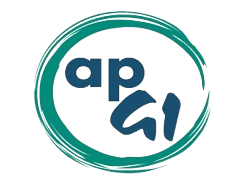Every year, the “APGI Young Investigator Award” recognizes the most outstanding doctoral thesis in the field of Pharmaceutics, Biopharmaceutics and Pharmaceutical Technology. It is kindly sponsored by Sanofi.
APGY YOUNG INVESTIGATOR AWARD 2025
The “APGI YOUNG INVESTIGATOR AWARD” recognizes the most outstanding doctoral thesis in the field of Pharmaceutical Technology each year .
If you defended your PhD thesis between 15 november 2023 and 14 october 2024, you can candidate for the 2025 “APGI YOUNG INVESTIGATOR AWARD”.
Please send a pdf file of your thesis (in French or English) and a short curriculum vitae, by 30 October 2024, to APGI (apgi@apgi.org) and Géraldine Piel (geraldine.piel@uliege.be). The file can be sent by We Transfer (a compressed version would be appreciated).
The price (accompanied by a check) will be officially awarded during the 5th European Conference on Pharmaceutics, 24-25 March 2025 in Porto, Portugal.
Young Investigator Award 2024
Dr. Helena Braet – Ghent University
Thesis: High pressure nebulization of smart hydrogels: driving intraperitoneal drug delivery forward
Dean:Prof. Dr. Jan Van Bocxlaer
Promoter:Prof. Dr. Katrien RemautCo-promoter:
Prof. Dr. Stefaan De Smedt
Peritoneal metastasis (PM) can be recognized by the presence of numerous small tumor lesions spread across the peritoneal membrane, which lines the abdominal cavity and organs. It most often arises as a consequence of the spread of tumor cells from primary tumors such as ovarian cancer. Currently, non-resectable PM is treated with a combination of intravenous (IV) chemotherapy and pressurized intraperitoneal aersosol chemotherapy (PIPAC), a drug delivery method that nebulizes therapeutics under elevated pressure locally in the peritoneal cavity. However, in clinical practice, the efficacy of PIPAC is currently limited by the off-label use of IV chemotherapeutics, which are rapidly cleared from the peritoneal cavity following administration. The aim of this thesis was to develop a controlled release drug delivery system, which can be evenly applied in the entire peritoneal cavity by high pressure nebulization (PIPAC), to treat ovarian PM and to prevent post-surgical peritoneal adhesions, a prevalent complication of intraperitoneal (IP) surgeries.
First, the potential of the heat-sensitive hydrogel Pluronic F127 was verified as a controlled release formulation applied by high pressure nebulization. A delicate balance was found between the capacity of the gel to control the release of model nanoparticles (NPs) and the aerosolization potential. As such, more concentrated gels could prolong the release a enclosed NPs up to 30 hours, but these formulations could not effectively be nebulized, and vice versa. Next, three different in situ forming hydrogel types were screened in vitro and in vivo for their efficacy in preventing peritoneal adhesions after IP administration by high pressure nebulization. The most promising formulation, a pH-sensitive UPy-PEG hydrogel, did not cause severe local or systemic toxic effects in rats and could significantly reduce the formation of peritoneal adhesions, even outperforming the commercially available Hyalobarrier® formulation. This hydrogel was then further evaluated as a drug depot for various types of chemotherapeutic NPs. After loading the UPy-PEG hydrogel with paclitaxel nanocrystals (PNC), this material led to a successful delay of the tumor progression and a significant increase of the survival time after administration in a rat model of PM. Moreover, we could demonstrate that acidification of the nebulized UPy-PEG solution by carbon dioxide, used to inflate the IP cavity during a PIPAC surgery, stimulated the gelation process, which prolonged the IP hydrogel retention. Finally, compared to the state-of-the-art Capnopen® spray nozzle, a more even three dimensional hydrogel distribution was noted following aerosolization with our newly developed Medspray® nozzle, which is why this device seems promising for the homogeneous IP delivery of viscous materials such as hydrogels.
To conclude, the PNC-loaded UPy-PEG hydrogel showcases an unequivocal potential as a controlled drug delivery platform with a dual application: the local treatment of ovarian PM and the prevention of post-operative peritoneal adhesions.

